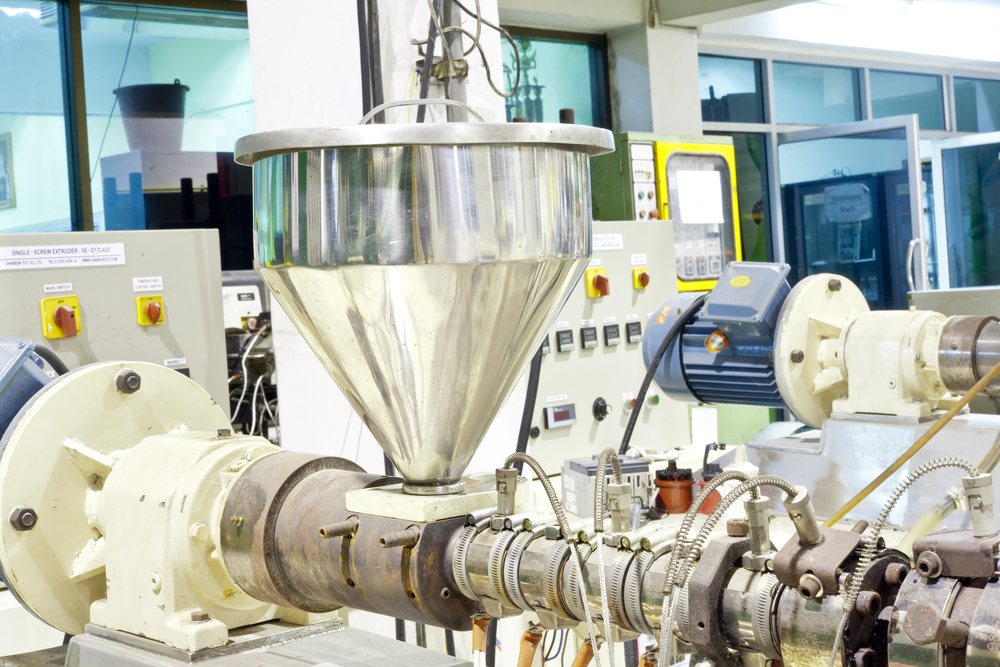There are many benefits of plastic extrusion and it can transform the way your business manufactures plastic products. The plastic extrusion process is continuous and can establish a high-volume output. This is ideal for high demand products because the output can be increased by utilizing the speed of plastic extrusion equipment.
An extrusion machine is a device which pushes or pulls material such as molten plastic through a shaped die. This forms a continuous length of product and cross section. This extrusion process is used to produce many products including plastic tubing, plastic sheets, and many other products. This manufacturing process offers many benefits including a wide range of complex cross sections.
Extrusion machines are used to produce a large variety of products from many different raw materials. This manufacturing process allows for a larger selection of plastic profiles and is even suitable for use with brittle raw materials. Plastic extrusion machines are used in the automotive industry and in industrial applications for producing food packaging film, wire insulation, automotive parts, tubing and plumbing products, window frames, and electrical conduit.
Types of Machines Used
- Plastic Sheet Extrusion Equipment: These extrusion machines start with raw plastic or raw materials, melting it down and sending it through a flat die. The plastic sheet machine forms a continuous plastic film that can be trimmed into a large variety of plastic products like weather stripping, plastic panels, and more.
- Single Screw Extrusion Machines: These machines have one screw operating a cylinder that combines plastic granules and pushes them through a die. This results in the final product shape.
- Twin Screw Extrusion Machines: Twin screw extruders have many screw diameters and configuration options. These extruders are perfect for when special colors or attributes are needed (with the use of additives) and can be used across all industries that use plastics.
What Goes into the Extrusion Process?
Plastic material is fed into an extruder hopper, and is gradually melted by heat created from the turning screws and heating components. The screws have three different zones to move materials along the extrusion process:
- Feed Zone: This is where the plastic material gets gravity fed into the extrusion machine.
- Melting Zone: This is the section where the plastic materials are melted to the desired temperature.
- Metering Zone: This is where the last bits of plastic are melted and mixed to create a uniform temperature and composition before moving onto the cooling process.
Temperature Control
It is essential to maintain a consistent temperature inside the extruder’s barrel. Overheating can cause imperfections, so typically the barrel is heated gradually. The temperature is maintained using a series of fan and water cooling systems before it’s extruded through a die mold.
Die Mold
A die mold creates one continuous profile that can then be cut into parts. Unlike injection molding, die molds will allow your product to be continuously made at desired sizes. There are various types of dies that can be implemented into your process.
- Blown Film Extrusion: This type of process includes three types of dies, annular, spider, and spiral. As the molten plastic leaves the die, it creates a semi-solid tube and is cooled down. Air pressure is used to expand the tube and is drawn upward where the plastic is stretched over rollers.
- Film Extrusion is used when plastic sheets need to be thicker.
- Tubing Extrusion is typically seen used for products like PE, ABS, Acrylic, and PVC Piping.
- Over Jacketing Extrusions are used in the outer layer of wires and cables. Two types of dies are used, tubing or jacketing, and pressure.
Contact Plastic Extrusion Technologies
As one of the top plastic extruders in Ohio, Plastic Extrusion Technologies provides high-quality plastic extrusions, tubing extrusions, and tooling. We are here to solve any extrusion challenge you might encounter by providing the highest-quality extruded parts on the market.
Plastic Extrusion Technologies can use many types of molten plastic in this process. Some of the most commonly used plastics include:
- Nylon
- Polyethylene, low and high-density
- Acrylic
- Polypropylene (different variations of polymer)
- Polycarbonate
- ABS
- PVC
- TPR
We can form these thermoplastic materials into strips, rolls, or coils depending on your needs. With the use of special additives, you can also choose from a wide array of colors when creating your final product, though color options may vary by manufacturer.
If you require plastic extruding services, contact Plastic Extrusion Technologies for more information. With over 100 years of experience in the plastic industry, we are happy to answer any questions you may have about plastic materials and extruded products. Contact us today for more information about our custom plastic extrusion capabilities and manufacturing process.

